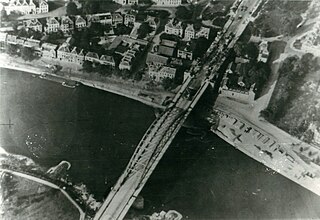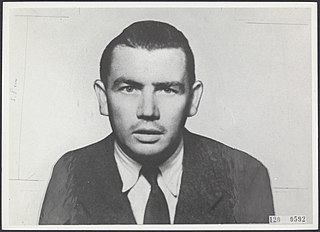 W
WThe Battle of Arnhem was a major battle of the Second World War at the vanguard of the Allied Operation Market Garden. It was fought in and around the Dutch towns of Arnhem, Oosterbeek, Wolfheze and Driel and the surrounding countryside from 17 to 26 September 1944.
 W
WThe Battle of Nijmegen or Liberation of Nijmegen occurred in the Netherlands from 17 to 20 September 1944, as part of Operation Market Garden during World War II.
 W
WThe Battle of Overloon was a battle fought in the Second World War battle between Allied forces and the German Army which took place in and around the village of Overloon in the south-east of the Netherlands between 30 September and 18 October 1944. The battle, which resulted in an Allied victory, ensued after the Allies launched Operation Aintree. The Allies went on to liberate the town of Venray.
 W
WThe Battle of the Scheldt in World War II was a series of military operations led by the First Canadian Army, with Canadian, Polish and British units attached, to open up the shipping route to Antwerp so that its port could be used to supply the Allies in north-west Europe. Under acting command of the First Canadian's Lieutenant-General Guy Simonds, the battle took place in northern Belgium and southwestern Netherlands from October 2 to November 8, 1944.
 W
WThe Battle of Overloon was a battle fought in the Second World War battle between Allied forces and the German Army which took place in and around the village of Overloon in the south-east of the Netherlands between 30 September and 18 October 1944. The battle, which resulted in an Allied victory, ensued after the Allies launched Operation Aintree. The Allies went on to liberate the town of Venray.
 W
WThe Breskens Pocket was a pocket of fortified German resistance against the Canadian First Army in the Battle of the Scheldt during the Second World War. It was chiefly situated on the southern shore of the Scheldt estuary in the southern Netherlands, near the Belgian border. It was named after the town of Breskens, which was later freed from German occupation during Operation Switchback.
 W
WThe Bunker Tragedy or the Bunkerdrama was an atrocity committed by the staff at the Herzogenbusch concentration camp in the Netherlands, in January 1944 during World War II.
 W
WThis is a chronological overview of the dates at which the liberation by the Allies in World War II took place of a number of Dutch cities and towns.
 W
WDolle Dinsdag took place in the Netherlands on 5 September 1944, when celebrations were prompted after broadcasts alleged that Breda, in occupied Netherlands, had been liberated by Allied forces.
 W
WThe Dutch famine of 1944–45, known in the Netherlands as the Hongerwinter, was a famine that took place in the German-occupied Netherlands, especially in the densely populated western provinces north of the great rivers, during the winter of 1944–45, near the end of World War II.
 W
WJoe's Bridge is the nickname given to Bridge No.9 on the Bocholt-Herentals Canal outside the town of Neerpelt, in the Belgian city of Lommel just south of the Belgian-Dutch border. The bridge was captured by British troops in September 1944, becoming the springboard for the ground offensive of Operation Market-Garden.
 W
WChristiaan Antonius Lindemans was a Dutch double agent during the Second World War, working under Soviet control. Otherwise known as Freddi Desmet, a Belgian army officer and SOE agent with security clearance at the Dutch Military Intelligence Division of the SOE (MID/SOE). He is better known under his nickname "King Kong" or in some circles as "le Tueur" as he undertook missions to kill and was ready to shoot at the slightest provocation. There is speculation that Lindemans was a member of Colonel Claude Dansey's Z organisation.
 W
WLine-crosser is a Dutch concept from World War II. The name is used to refer to 21 people, mostly from Werkendam, who during the last months of the war maintained a secret connection between occupied and liberated Netherlands across the Biesbosch and the Merwede. They were part of the larger Biesbosch resistance group, and the Albrecht intelligence group.
 W
WOperation Market Garden was a failed World War II military operation fought in the Netherlands from 17 to 25 September 1944. It was the brainchild of Field Marshal Sir Bernard Law Montgomery and strongly supported by Winston Churchill and Franklin Roosevelt. The airborne part of the operation was undertaken by the First Allied Airborne Army with the land operation by XXX Corps of the British Second Army. The objective was to create a 64 mi (103 km) salient into German territory with a bridgehead over the River Rhine, creating an Allied invasion route into northern Germany. This was to be achieved by seizing a series of nine bridges by Airborne forces with land forces swiftly following over the bridges. The operation succeeded in liberating the Dutch cities of Eindhoven and Nijmegen along with many towns, creating a 60 mi (97 km) salient into German-held territory limiting V-2 rocket launching sites. It failed, however, to secure a bridgehead over the Rhine, with the advance being halted at the river.
 W
WOperation Pegasus was a military operation carried out on the Lower Rhine near the village of Renkum, close to Arnhem in the Netherlands. Overnight on 22–23 October 1944, the Allies successfully evacuated a large group of men trapped in German occupied territory who had been in hiding since the Battle of Arnhem.
 W
WOperation Pheasant also known as the Liberation of North Brabant was a major operation to clear German troops from the province of North Brabant in the Netherlands during the fighting on the Western Front in the Second World War. This offensive was conceived as a result of the failure of Operation Market Garden and the allied effort to capture the important port of Antwerp. It was conducted by the allied 21st Army Group between 20 October to 4 November 1944.
 W
WThe Putten raid was a civilian raid conducted by Nazi Germany in occupied Netherlands during the Second World War. On 1 October 1944, a total of 602 men – almost the entire male population of the village – were taken from Putten, in the central Netherlands, and deported to various concentration camps inside Germany. Only 48 returned at the end of the war. The raid was carried out as a reprisal for a Dutch resistance attack on a vehicle carrying personnel from the Wehrmacht.
 W
WWhile the Germans occupied the Netherlands during the Second World War (1940–1945), Allied air forces carried out a number of operations over Rotterdam and the surrounding region. These included bombing strategic installations, leaflet dropping, and during the last week of the war, the dropping of emergency food supplies.
 W
WThe Western Front was a military theatre of World War II encompassing Denmark, Norway, Luxembourg, Belgium, the Netherlands, the United Kingdom, France, Italy, and Germany. World War II military engagements in Southern Europe and elsewhere are generally considered as separate theatres. The Western Front was marked by two phases of large-scale combat operations. The first phase saw the capitulation of the Netherlands, Belgium, and France during May and June 1940 after their defeat in the Low Countries and the northern half of France, and continued into an air war between Germany and Britain that climaxed with the Battle of Britain. The second phase consisted of large-scale ground combat, which began in June 1944 with the Allied landings in Normandy and continued until the defeat of Germany in May 1945.